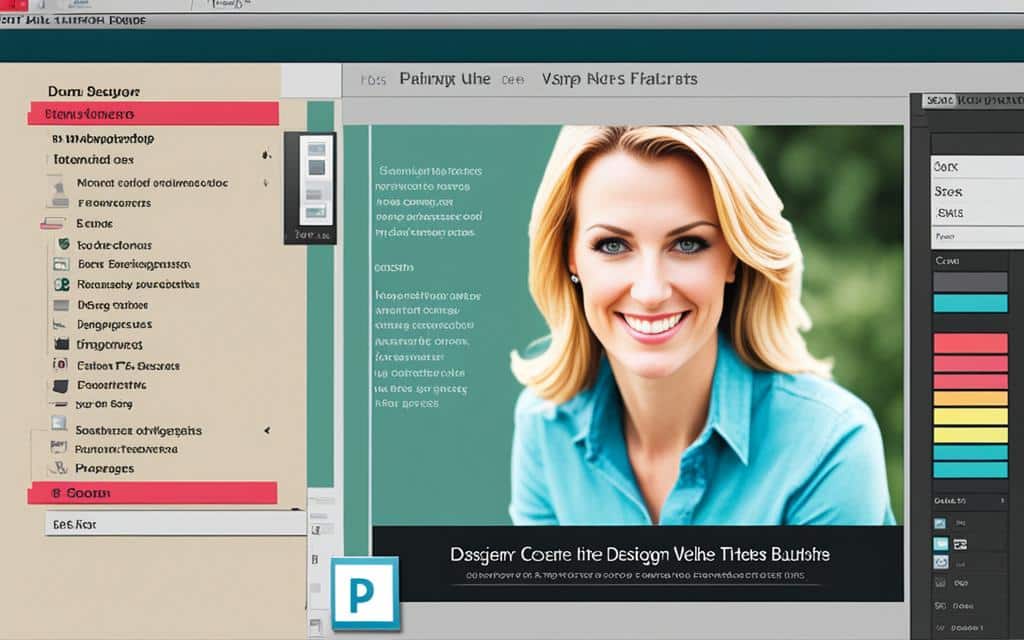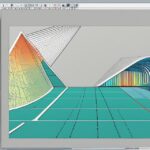Table of Contents
Adobe Photoshop is a powerful image-editing software that is widely used in the web design world. In this article, we will explore some of the best Photoshop tricks that can improve your workflow, save time, and help you design the best websites possible. Whether you are a beginner or an experienced web designer, these tips will help you elevate your skills in Photoshop.
When it comes to web design, Photoshop offers a myriad of features and tools that can enhance your creative process. From optimizing your workspace to learning keyboard shortcuts, there are numerous techniques that can save you time and streamline your design workflow. In this article, we will delve into some of the most valuable tips and tricks that will help you harness the full potential of Photoshop for web design.
By implementing these strategies, you can enhance your efficiency, organization, and overall design quality. Whether you are a seasoned professional or just starting out, these tips are designed to help you achieve outstanding results in your web design projects. So, let’s dive in and discover the best Photoshop tricks for web designers.
Streamline Your Workspace
To improve your workflow in Photoshop and enhance your web design process, it is crucial to set up your workspace in a way that maximizes productivity and efficiency. By making simple adjustments to your Photoshop preferences and customizing your workspace settings, you can create an environment that supports your design needs.
Select the Graphic and Web Workspace
When starting a web design project in Photoshop, it is recommended to select the Graphic and Web workspace. This workspace layout is specifically tailored for web design tasks, providing easy access to essential tools and panels such as the Layers panel, Color Swatches, and the Navigation panel. By using this workspace, you can save time navigating through menus and panels, streamlining your design process.
Adjust Measurement Units and Cache Settings
Customizing the measurement units in Photoshop to match your web design requirements can enhance your precision and accuracy. By setting the rulers, grids, and guides to pixels, you can easily align and position elements on your canvas, ensuring pixel-perfect designs.
Additionally, optimizing your cache settings can improve performance and speed up your workflow. By allocating sufficient memory for Photoshop’s cache, you can minimize lag and ensure smooth operation, even when working on complex web design projects.
Customize the Font Menu for New Documents
If you frequently use specific fonts in your web design projects, customizing the font menu for new documents can save you time searching for and selecting fonts. By adding your preferred fonts to the font list, you can quickly access them when creating new designs, eliminating the need to scroll through a long font menu.
By streamlining your workspace and optimizing your Photoshop preferences, you can create an environment that supports your web design workflow. From selecting the appropriate workspace to customizing measurement units and cache settings, these simple adjustments can make a significant difference in your productivity and efficiency. Take the time to configure your Photoshop workspace according to your design needs, and enjoy a smoother and more streamlined web design experience.
Learn Keyboard Shortcuts
Learning keyboard shortcuts can greatly enhance your productivity and efficiency when working in Photoshop. With a wide array of shortcuts available for various functions and tools, you can save time and eliminate the need for unnecessary mouse clicks. By incorporating these shortcuts into your workflow, you can streamline your design process and focus on the creative aspects of your work.
Having a cheat sheet of common Photoshop keyboard shortcuts can serve as a handy reference, allowing you to quickly access important commands without interrupting your workflow. Keep it nearby for easy access and gradually familiarize yourself with the most frequently used shortcuts relevant to your design tasks.
To help you get started, here are a few essential Photoshop keyboard shortcuts:
| Tool | Shortcut |
|---|---|
| Move Tool | V |
| Brush Tool | B |
| Eraser Tool | E |
| Zoom In | Ctrl + + (plus sign) |
| Zoom Out | Ctrl + – (minus sign) |
With practice, you’ll become more proficient in using these shortcuts and be able to navigate through Photoshop with ease. Remember, efficiency in Photoshop not only saves time but also allows you to focus on the creative aspects of your work, resulting in more polished and professional designs.
In the next section, we’ll explore the importance of grouping and naming layers in Photoshop for better organization and streamlined workflow.
Group and Name Layers
Working with layers is a fundamental aspect of Photoshop web design. It allows you to create complex designs and easily manage individual elements. To keep your design organized and maintain an efficient workflow, it’s essential to group and name layers properly.
When you have multiple layers in a project, it can quickly become overwhelming and challenging to navigate through them. By grouping related layers together, you can maintain a clear structure and easily find specific elements when needed. To group layers, select the layers you want to group by holding down the Shift key and clicking on each layer. Then, right-click and choose “Group Layers” from the context menu, or use the keyboard shortcut Ctrl+G (Command+G on a Mac).
Once you’ve created groups, it’s important to name them appropriately. Double-click on a group or layer to access its name and give it a descriptive label. This makes it easier to identify the purpose of each layer or group, especially when working on complex projects with multiple contributors. By providing clear and concise names, you and your team can quickly locate and modify specific elements without confusion.
Proper layer naming also helps with organization during the design process. It allows you to focus on specific sections or components of your design without getting distracted by unrelated layers. Additionally, naming layers can be especially helpful when exporting assets or collaborating with developers, as they can easily understand the structure of the design and identify the required elements.
Here’s an example of how layer grouping and naming can improve your workflow:
| Without Grouping and Naming | With Grouping and Naming |
|---|---|
In the example above, the first image shows a design without any layer organization. It’s difficult to understand the relationship between elements and find specific layers quickly. However, in the second image, the layers are grouped and named logically, making it much easier to navigate, identify, and modify different parts of the design.
By implementing effective layer grouping and naming strategies, you can enhance your productivity, streamline your workflow, and deliver well-organized designs. Don’t overlook this essential step in Photoshop web design!
Filter Layers
When working with a large number of layers in Photoshop, keeping track of them all can be challenging. Fortunately, Photoshop offers a convenient feature that allows you to filter layers based on different criteria such as type, name, effect, and color.
This layer filtering feature is invaluable for quickly locating and selecting specific layers for editing or visibility adjustments. It streamlines layer management and helps you maintain a clean and organized workspace. Whether you need to find a specific text layer, an adjustment layer, or a layer with a particular effect, the filtering option saves you time and effort.
How to Filter Layers in Photoshop
- Select the Layers panel in Photoshop (Window > Layers).
- Click on the filter icon at the top right corner of the Layers panel.
- Choose from the available filtering options such as layer type, name, effect, or color.
- Click on the desired filter criteria, and Photoshop will display only the layers that match the selected filter.
In addition to layer filtering, another useful technique for layer management is using the Move tool to select layers directly. Simply hold the Ctrl key (Cmd on Mac) and click on the desired layer in the document. This allows for quick layer selection without the need to navigate through the Layers panel.
By effectively utilizing layer filtering and direct layer selection, you can streamline your workflow, improve efficiency, and maintain better layer visibility in Photoshop.
Summary
Filtering layers in Photoshop is a valuable tool for managing complex projects with numerous layers. The ability to quickly locate and select specific layers based on different criteria saves time and improves the overall workflow. Combined with selecting layers directly using the Move tool, you can effectively manage layer visibility and enhance your productivity in Photoshop.
Create a Grid
Grid systems are an essential aspect of web design that bring order and structure to your layouts. In Photoshop, you can easily create a grid by using the New Guide Layout option or manually adding horizontal and vertical guides. Grids help you align elements accurately and maintain consistency in your designs. They are particularly useful for responsive web design and designing multiple pages with a consistent layout.
With the Photoshop grid system, you can achieve precise alignment and spacing between elements, ensuring a visually pleasing and professional-looking design. By defining a grid layout, you establish a framework that guides the placement of elements on the page, making it easier to create balanced and visually appealing compositions.
Whether you choose to use a predefined grid layout or create a custom one, grids provide a visual structure that helps to create a sense of organization in your design. They assist in achieving a clean and professional look by ensuring that elements are aligned properly and that there is a consistent rhythm throughout the design.
To create a grid in Photoshop:
- Open your document in Photoshop.
- Navigate to the “View” menu and select “New Guide Layout”.
- In the “New Guide Layout” dialog box, specify the number of columns and rows you want to include in your grid.
- Choose the desired option for the gutter width, which determines the space between the columns and rows.
- Click “OK” to create the grid based on your specifications.
Benefits of Using a Grid System in Web Design
Using a grid system in web design offers several benefits:
- Consistency: Grids help maintain visual consistency by providing a framework for positioning elements on the page. This ensures that elements align properly and creates a cohesive design.
- Efficiency: Grids make it easier to place and align elements, saving you time and effort during the design process. They provide a structure that simplifies the layout creation process.
- Responsive Design: Grid systems are particularly useful for responsive web design. They allow you to easily adapt your design for different screen sizes and devices by adjusting the grid layout accordingly.
By leveraging the power of the Photoshop grid system, you can create visually appealing and well-structured web designs that resonate with your audience. Whether you’re designing a single-page website or a complex multi-page layout, utilizing a grid system will enhance your design process and help you achieve professional results.
Import Color Swatches
In web design, color schemes play a crucial role in creating visually appealing and cohesive designs. To ensure consistency in your color palettes, Adobe Photoshop allows you to import color swatches from HTML, CSS, or SVG files. By importing these swatches, you have a ready-made starting point for your color selection, especially when working with existing assets such as logos or branding materials.
The Swatches panel in Photoshop provides a convenient way to load and manage these imported color swatches. With just a few clicks, you can easily apply the imported colors to your design elements, creating harmonious and professional-looking web designs. This feature saves you time and effort by providing a versatile library of pre-defined color options right at your fingertips.
Importing color swatches into Photoshop not only enhances the visual appeal of your designs but also promotes consistency and coherence throughout your web design projects. With a wide range of color schemes readily available, you can experiment with different combinations and find the perfect one to suit your design objectives.
Switch Between Background and Foreground Colors
In Photoshop, you can easily switch between the background and foreground colors to streamline your workflow and save time. Instead of manually clicking on the color icons, you can use a handy shortcut. By pressing the X key on your keyboard, you can toggle between the two colors, making it more efficient to select the desired color for your design elements.
This shortcut is especially useful when working with different color variations in your design. Whether you are experimenting with different color schemes or fine-tuning the color selection, the ability to quickly switch between foreground and background colors can greatly enhance your productivity in Photoshop.
Additionally, if you want to revert back to the default black and white foreground and background colors, you can press the D key on your keyboard. This shortcut ensures that you can easily return to the standard color settings whenever needed.
Switching between background and foreground colors using keyboard shortcuts is a simple yet powerful technique that can significantly improve your Photoshop workflow. By eliminating the need for manual mouse clicks and providing a quick way to reset to default colors, you can focus more on your design process and achieve better results.
| Shortcut | Description |
|---|---|
| X | Switches between foreground and background colors |
| D | Resets foreground and background colors to default black and white |
Change Opacity via Keyboard
Adjusting the opacity of tools or layers in Photoshop is made simple with the use of keyboard shortcuts. By pressing the numbers 1 to 0 on your keyboard, you can set the opacity from 10% to 100%. This shortcut is applicable to both tools and layers, allowing you to quickly fine-tune the transparency of your design elements without the need for manual entry of values. It is a convenient way to achieve the desired level of opacity with ease and efficiency.
Here is a useful chart showcasing the keyboard shortcuts for opacity adjustment in Photoshop:
| Opacity Shortcut | Opacity Setting |
|---|---|
| 1 | 10% |
| 2 | 20% |
| 3 | 30% |
| 4 | 40% |
| 5 | 50% |
| 6 | 60% |
| 7 | 70% |
| 8 | 80% |
| 9 | 90% |
| 0 | 100% |
With these keyboard shortcuts, you can effortlessly adjust the opacity of your design elements, saving you time and enhancing your workflow in Photoshop.
Draw Straight Lines
Drawing straight lines in Photoshop is a fundamental skill that every web designer should master. The ability to create clean, crisp lines is essential for creating precision shapes and aligning elements in your web design projects. Fortunately, Photoshop provides a simple and intuitive method for drawing straight lines effortlessly.
To draw a straight line in Photoshop, simply hold down the Shift key while using any drawing tool. This technique ensures that the line you create is perfectly horizontal or vertical, guaranteeing precise alignment. Whether you’re drawing a line with the Brush tool, the Pen tool, or even the Shape tools, holding Shift will result in a straight line every time.
In addition to this method, Photoshop also allows you to create a straight line between two different points. Simply click on one point and then Shift-click on another point, and Photoshop will automatically connect the two points with a straight line. This feature is incredibly useful when you need to align elements accurately or create specific shapes in your designs.
With Photoshop’s straight line drawing capabilities, you can ensure that your designs have clean, professional-looking lines and achieve the desired level of precision. Whether you’re working on a complex layout or a simple design, mastering the art of drawing straight lines will greatly enhance your web design projects.
Benefits of Drawing Straight Lines in Photoshop
- Accurate shape creation
- Precise alignment of design elements
- Clean and professional-looking lines
- Efficient workflow for web design projects
With these benefits in mind, it’s clear that mastering straight line drawing in Photoshop is a crucial skill for any web designer. Practice using the Shift key and creating straight lines between two points to improve your precision and achieve stunning designs.
Quick Tips for Drawing Straight Lines
- Hold down the Shift key to draw perfectly horizontal or vertical lines
- Click on one point, then Shift-click on another point to create a straight line between them
- Experiment with different drawing tools in Photoshop to find the one that suits your needs
- Use guides or grids to align your lines and elements accurately
- Practice regularly to improve your hand-eye coordination and line drawing skills
| Tool | Description |
|---|---|
| Brush tool | Use this tool to draw freehand lines with various brush sizes and shapes |
| Pen tool | Create precise curves and lines by placing anchor points and manipulating bezier handles |
| Shape tools | Choose from a variety of predefined shapes, including lines, rectangles, and polygons |
Sample Color
In web design, selecting the perfect color palette is crucial for creating visually appealing and cohesive websites. Fortunately, Photoshop offers a powerful tool called the Eyedropper tool, which allows you to sample colors from anywhere on your screen with precision and ease.
With the Eyedropper tool, you can accurately pick colors by simply clicking on the desired color and dragging the Eyedropper icon to any location on your monitor. This tool eliminates the need for manual color code input, ensuring that you capture the exact color you want for your design.
Whether you’re trying to match the color of an existing element or seeking inspiration from an image or website, the Eyedropper tool makes color sampling an effortless process. By selecting the perfect shade or hue using this tool, you can maintain color consistency throughout your web design projects and create visually harmonious layouts.
“The Eyedropper tool is an essential feature in Photoshop for capturing and matching colors accurately in web design. It streamlines the color selection process and ensures consistency in your design projects.”
Conclusion
Photoshop is an invaluable tool for web designers, empowering them to create visually captivating websites. Throughout this article, we have explored a range of tips and tricks that can enhance your design skills and streamline your workflow.
By optimizing your workspace, learning keyboard shortcuts, and employing effective layer management, you can save time and increase your productivity. Additionally, utilizing color swatches and the sampling tool allows for consistent and precise color selection, lending cohesiveness to your designs.
Ultimately, by incorporating these techniques into your design process, you can produce high-quality web designs efficiently. Remember to take the time to explore and practice these tips to become a proficient Photoshop web designer. With dedication and mastery of Photoshop’s features, you can create visually stunning websites that leave a lasting impression on your audience.
FAQ
What is Adobe Photoshop?
Adobe Photoshop is a powerful image-editing software widely used in the web design world. It allows designers to manipulate and enhance images, create graphics, and design layouts for websites and other digital platforms.
How can I streamline my workspace in Photoshop?
To optimize your workflow in Photoshop, you can select the Graphic and Web workspace, adjust measurement units and cache settings, and customize the font menu for new documents. These simple changes can significantly improve your productivity and efficiency while working in Photoshop.
Are there any keyboard shortcuts in Photoshop that can help me save time?
Yes, there are numerous keyboard shortcuts available for various functions and tools in Photoshop. By learning and incorporating these shortcuts into your workflow, you can speed up your design process, avoid unnecessary mouse clicks, and increase overall efficiency.
How can I keep my design organized when working with layers in Photoshop?
To keep your design organized, you can group and name layers in Photoshop. By double-clicking on a layer, you can easily change its name and identify its purpose. Additionally, you can group multiple layers together for better organization and efficiency in your workflow.
Is there a way to quickly locate specific layers in Photoshop?
Yes, Photoshop offers the option to filter layers based on different criteria such as type, name, effect, and color. This feature allows you to quickly locate and select specific layers for editing or visibility adjustments. The Move tool can also be used to directly select a layer by holding Ctrl and clicking on it.
How can I create a grid in Photoshop?
In Photoshop, you can easily create a grid by using the New Guide Layout option or manually adding horizontal and vertical guides. Grids help you align elements accurately and maintain consistency in your designs, making them particularly useful for responsive web design and designing multiple pages with a consistent layout.
Can I import color swatches into Photoshop?
Yes, you can import color swatches directly into Photoshop from HTML, CSS, or SVG files. This allows you to have a starting point for your color palette when working with existing assets such as logos or branding materials. The Swatches panel in Photoshop provides the option to load swatches and easily apply them to your design elements.
How can I quickly switch between background and foreground colors in Photoshop?
To quickly switch between the background and foreground colors in Photoshop, simply press the X key on your keyboard. This shortcut saves you time and eliminates the need to click on the color icons. Additionally, pressing the D key sets the foreground and background colors back to default black and white.
Can I change the opacity of a tool or a layer in Photoshop?
Yes, you can change the opacity of a tool or a layer in Photoshop using keyboard shortcuts. Pressing the numbers 1 to 0 on your keyboard sets the opacity from 10% to 100%. This shortcut applies to both tools and layers, allowing you to quickly adjust opacity without manually entering values.
How can I draw straight lines in Photoshop?
Drawing straight lines in Photoshop is made easy by holding down the Shift key while using any drawing tool. This ensures that the line is perfectly horizontal or vertical. Additionally, you can click on two different points to create a straight line between them. These features are useful for creating precise shapes and aligning elements in your web design projects.
How can I sample colors accurately in Photoshop?
In Photoshop, you can use the Eyedropper tool to sample colors from anywhere on your screen. Simply click on the desired color, and drag the Eyedropper icon to any location on your monitor to pick the color. This tool is essential for capturing color inspiration and matching colors accurately in your web design projects.
How can mastering Photoshop’s features and tricks elevate my web design skills?
By mastering Photoshop’s features and tricks, you can enhance your web design skills and create visually stunning websites. The tips and tricks discussed in this article, ranging from workspace optimization to efficient layer management and color sampling, can help you work more efficiently and produce high-quality web designs.













